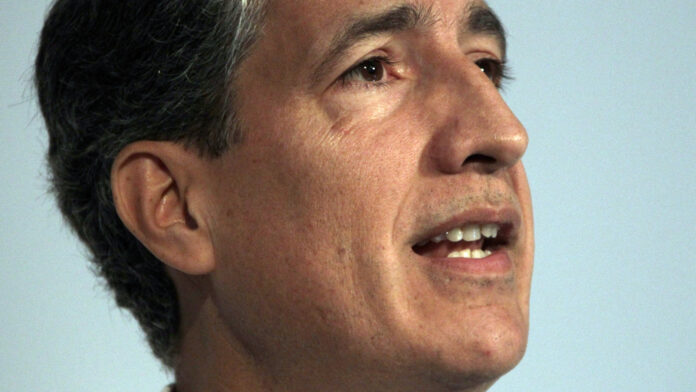
ALBERTO Calderon used his first quarter as CEO of AngloGold Ashanti to announce a revamp of the group’s operating model which includes removing duplication of roles and improving accountability.
But his tenure has been hit by an early blow after the group said today its Quebradona project could be delayed by up to two years after the Colombian government ‘archived’ the project’s application for an environmental permit.
While Quebradona’s mining operations licence has been approved, the environmental permit has been sent back for improvement by the government. The new submission was likely “to add 18 to 24 months to the licensing process,” AngloGold said.
Calderon had prioritised the acceleration of AngloGold’s growth projects prior to taking up control in September. Quebradona – which is scoped to produce 67,000 ounces of gold annually – and another Colombian prospect Gramalote, have potential to add a combined 350,000 ounces of new production to AngloGold.
In addition to these projects, as well as the re-engineering Obuasi gold mine in Ghana, AngloGold was forecast by interim CEO Christine Ramon in February to spend $1bn from now until 2025 taking gold production to 3.4 million ounces annually.
Speaking during a media conference call, Calderon said the Colombian Environmental Agency, like any technocratic organisation, went through cycles. “It has for the first time in a while archived about eight projects … but Colombia has a strong rule of law and we are confident we can challenge it and address the technological problems.
“It (the archival) is not a showstopper but this (environmental application) might go into the next government which is not a bad thing,” he said.
“Outlier in costs”
Production in the third quarter was 613,000 oz, a 5% quarter on quarter improvement excluding Obuasi which was suspended in May following an underground mining fatality. The mine began underground workings in October in which it will rebuild stockpiles. As a result, full year production guidance is unchanged at the adjusted level of 2.45 million to 2.6 million ounces – a 300,000 oz reduction on an earlier forecast.
However, the third quarter is most notable for Calderon’s focus on cost improvements which will be achieved through management restructuring. Calderon told the Financial Times Mining Summit last month that AngloGold’s cash costs were 30% to 40% higher than its peer group – a deficit that had to be narrowed in order for AngloGold Ashanti to reclaim tier one gold producer status.
He said today the new operating model would prioritise “efficiency, agility and accountability” and added: “My immediate aim is to ensure that we have the right people, in the right places, making the right decisions, to provide better outcomes.
“We remain an outlier on costs, well above our peers.”
A process of voluntary retrenchments and redundancies was underway as a result. “A company has to do what a company has to do,” Calderon said.
According to Calderon there was heavy duplication of management skills such that the mine manager at Ghana’s Obuasi mine had as many as “five or six bosses”. This was a contributor to the increase in cash costs – at $927/oz compared to $755/oz in the third quarter of the 2020 financial year – which in turn led to a $360/oz year on year increase in all in sustaining costs (AISC) of $1,362/oz in the third quarter.
The year on year increase in third quarter AISC was also related to higher capital costs, partly related tailing compliance expenses which accounted for $60/oz of the higher AISC. Mine feasibility studies at AngloGold’s Tropicana mine in Australia, Geita in Tanzania and Obuasi had also contributed to higher costs – all of which would reduce in two years.
“You should start to see an immediate improvement, although it will take some time to get where we want to go,” said Calderon. He promised to provide more details on the cost reduction programme in February at the firm’s year end results presentation.











